Property from the Estate of Howard Karshan Jackson Pollock Follow Untitled signed and dated "Jackson Pollock 51" lower right; further signed and inscribed "Jackson Pollock The Springs East Hampton" on the reverse of the backing board ink on Howell paper 18 x 22 in. (45.7 x 55.9 cm.) Executed in 1951.
Condition Report Request Condition Report Thank you for your request. The Condition Report will be sent shortly. Contact Us * Required Send me the Report Via Email Fax Contact Specialist Cancel Provenance Donald Braider, The Springs, East Hampton (gifted by the artist) Dr. and Mrs. Theodore J. Edlich, Jr., New York Bernstein & Waddington Gallery Ltd, Zurich Acquired from the above by the late owner in 1974 Exhibited New York, Brooklyn Museum Art School, Art Works from the Collection of Dr. and Mrs. Theodore J. Edlich, Jr. , January 1-31, 1961, no. 23 (titled Abstraction ) Berlin, Deutsche Guggenheim; Venice, Peggy Guggenheim Collection; New York, Solomon R. Guggenheim Museum, No Limits, Just Edges: Jackson Pollock Paintings on Paper , January 29, 2005 - September 29, 2006, no. 78, pp. 124, 129 (illustrated, p. 124) Tate Liverpool, Jackson Pollock Blind Spots , June 30 - October 18, 2015, pp. 129, 157 (illustrated, p. 129) Literature Francis Valentine O'Connor and Eugene Victor Thaw, eds., Jackson Pollock A Catalogue Raisonné of Paintings, Drawings and Other Works, Volume 3: Drawings, 1930-1956 , no. 838, p. 314 (illustrated) Catalogue Essay “I approach painting in the same sense as one approaches drawing; it’s direct.” Jackson Pollock interviewed by William Wright summer 1950 Executed at the height of his career, Jackson Pollock’s Untitled is central among an important group of 1951 works on paper that exhibit the artist’s seminal relationship with spontaneity and his unconventional working method. For most of his career, Pollock’s use of paper was directly linked to his personal finances and the political climate, resulting in the artist working with a support that was inexpensive, easily sourced, and made without the use of imported materials. However, the year of 1951 saw Pollock’s most experimental period as a draughtsman and a unique focus on the paper he chose to use. In November or December of 1950, sculptor and friend to the artist, Tony Smith gifted Pollock previously unavailable Japanese paper, remarkable for its thin, almost translucent quality, which inspired him to explore new drawing techniques. Pollock worked with sheets of paper stacked upon one another, splattering or pouring ink onto the first sheet and allowing it to seep through to the sheets below, and then modifying each sheet individually. Additionally, the artist reversed ink-stained sheets to form mirror images as the ink was visible on both sides due to the absorbency of the paper, a method evident in the present work. In Untitled , the bright pink colorant and dark blue ink applied to the reverse of the sheet appear as a ghostly, delicate hue that are a sublime mirror of the artist’s marks. In 1951, Pollock also created a number of drawings, including Untitled , on unique handmade paper made specifically for him by Douglas Morse Howell at his Long Island studio using homegrown flax, linen tablecloths, denim, lace and flowers. He commissioned paper from Howell after seeing it used by Anne Ryan at Betty Parsons Gallery in 1951 at an exhibition of collages shown concurrently with works by his wife, Lee Krasner highlighting the importance Pollock wanted the support to play in his drawings. The crevice-like textures and distinct colorations of this paper result in unforeseen outcomes and irregular edges to the drawn lines such that in the final product, the sheet itself is of equal weight to the artist’s calligraphic marks. Discussing Pollock's works on paper from 1951, art historian Bernice Rose describes: “Physically these drawings are characterized by their dematerialization of medium and their airy spaciousness… the only reference to the physical quality of his previous work is the density of soaked color as color, the way in which one way - or puddle - of color overlays another, and the way edges meet, establishing a discrete physical identity in spite of actual flatness. These are among Pollock’s most painterly works” ( Jackson Pollock Drawin
Property from the Estate of Howard Karshan Jackson Pollock Follow Untitled signed and dated "Jackson Pollock 51" lower right; further signed and inscribed "Jackson Pollock The Springs East Hampton" on the reverse of the backing board ink on Howell paper 18 x 22 in. (45.7 x 55.9 cm.) Executed in 1951.
Condition Report Request Condition Report Thank you for your request. The Condition Report will be sent shortly. Contact Us * Required Send me the Report Via Email Fax Contact Specialist Cancel Provenance Donald Braider, The Springs, East Hampton (gifted by the artist) Dr. and Mrs. Theodore J. Edlich, Jr., New York Bernstein & Waddington Gallery Ltd, Zurich Acquired from the above by the late owner in 1974 Exhibited New York, Brooklyn Museum Art School, Art Works from the Collection of Dr. and Mrs. Theodore J. Edlich, Jr. , January 1-31, 1961, no. 23 (titled Abstraction ) Berlin, Deutsche Guggenheim; Venice, Peggy Guggenheim Collection; New York, Solomon R. Guggenheim Museum, No Limits, Just Edges: Jackson Pollock Paintings on Paper , January 29, 2005 - September 29, 2006, no. 78, pp. 124, 129 (illustrated, p. 124) Tate Liverpool, Jackson Pollock Blind Spots , June 30 - October 18, 2015, pp. 129, 157 (illustrated, p. 129) Literature Francis Valentine O'Connor and Eugene Victor Thaw, eds., Jackson Pollock A Catalogue Raisonné of Paintings, Drawings and Other Works, Volume 3: Drawings, 1930-1956 , no. 838, p. 314 (illustrated) Catalogue Essay “I approach painting in the same sense as one approaches drawing; it’s direct.” Jackson Pollock interviewed by William Wright summer 1950 Executed at the height of his career, Jackson Pollock’s Untitled is central among an important group of 1951 works on paper that exhibit the artist’s seminal relationship with spontaneity and his unconventional working method. For most of his career, Pollock’s use of paper was directly linked to his personal finances and the political climate, resulting in the artist working with a support that was inexpensive, easily sourced, and made without the use of imported materials. However, the year of 1951 saw Pollock’s most experimental period as a draughtsman and a unique focus on the paper he chose to use. In November or December of 1950, sculptor and friend to the artist, Tony Smith gifted Pollock previously unavailable Japanese paper, remarkable for its thin, almost translucent quality, which inspired him to explore new drawing techniques. Pollock worked with sheets of paper stacked upon one another, splattering or pouring ink onto the first sheet and allowing it to seep through to the sheets below, and then modifying each sheet individually. Additionally, the artist reversed ink-stained sheets to form mirror images as the ink was visible on both sides due to the absorbency of the paper, a method evident in the present work. In Untitled , the bright pink colorant and dark blue ink applied to the reverse of the sheet appear as a ghostly, delicate hue that are a sublime mirror of the artist’s marks. In 1951, Pollock also created a number of drawings, including Untitled , on unique handmade paper made specifically for him by Douglas Morse Howell at his Long Island studio using homegrown flax, linen tablecloths, denim, lace and flowers. He commissioned paper from Howell after seeing it used by Anne Ryan at Betty Parsons Gallery in 1951 at an exhibition of collages shown concurrently with works by his wife, Lee Krasner highlighting the importance Pollock wanted the support to play in his drawings. The crevice-like textures and distinct colorations of this paper result in unforeseen outcomes and irregular edges to the drawn lines such that in the final product, the sheet itself is of equal weight to the artist’s calligraphic marks. Discussing Pollock's works on paper from 1951, art historian Bernice Rose describes: “Physically these drawings are characterized by their dematerialization of medium and their airy spaciousness… the only reference to the physical quality of his previous work is the density of soaked color as color, the way in which one way - or puddle - of color overlays another, and the way edges meet, establishing a discrete physical identity in spite of actual flatness. These are among Pollock’s most painterly works” ( Jackson Pollock Drawin
.jpg)

.jpg)

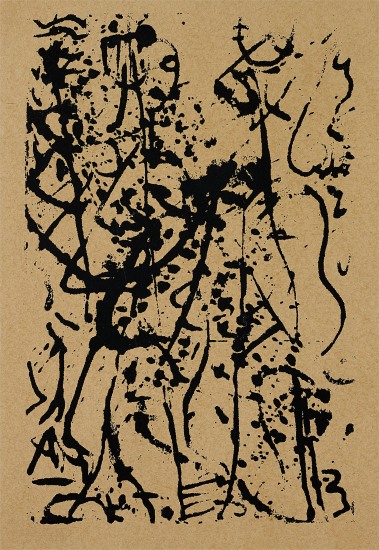
.jpg)
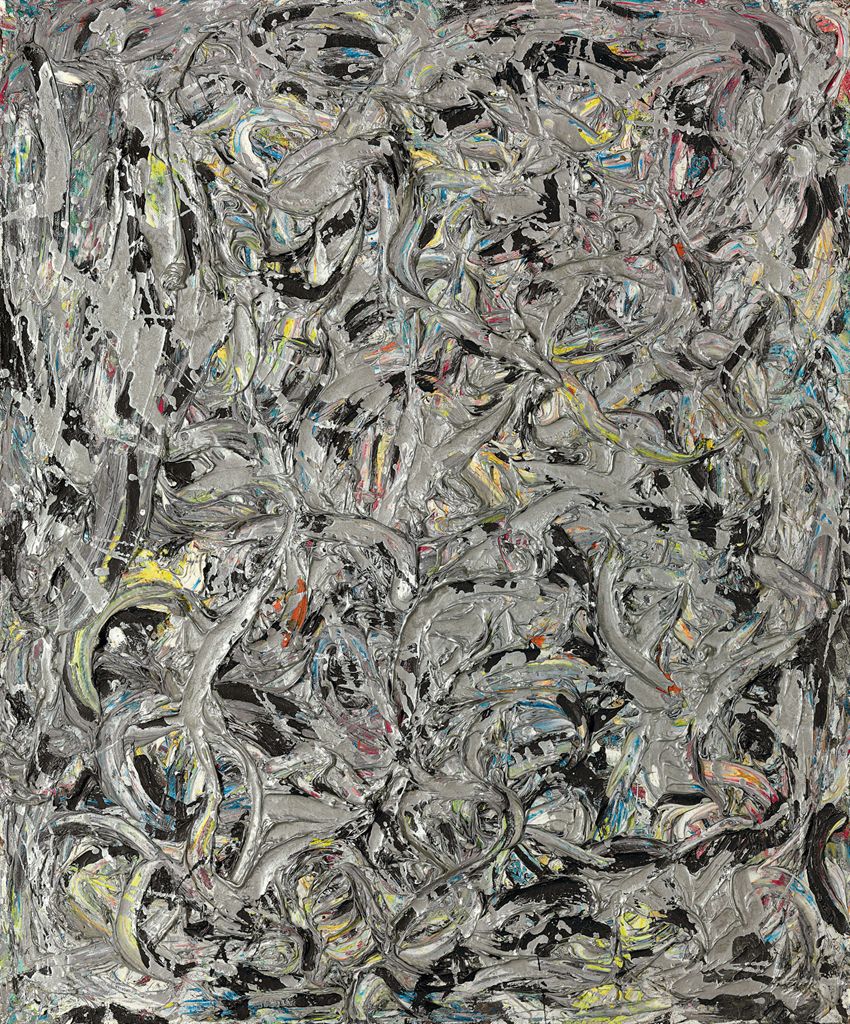
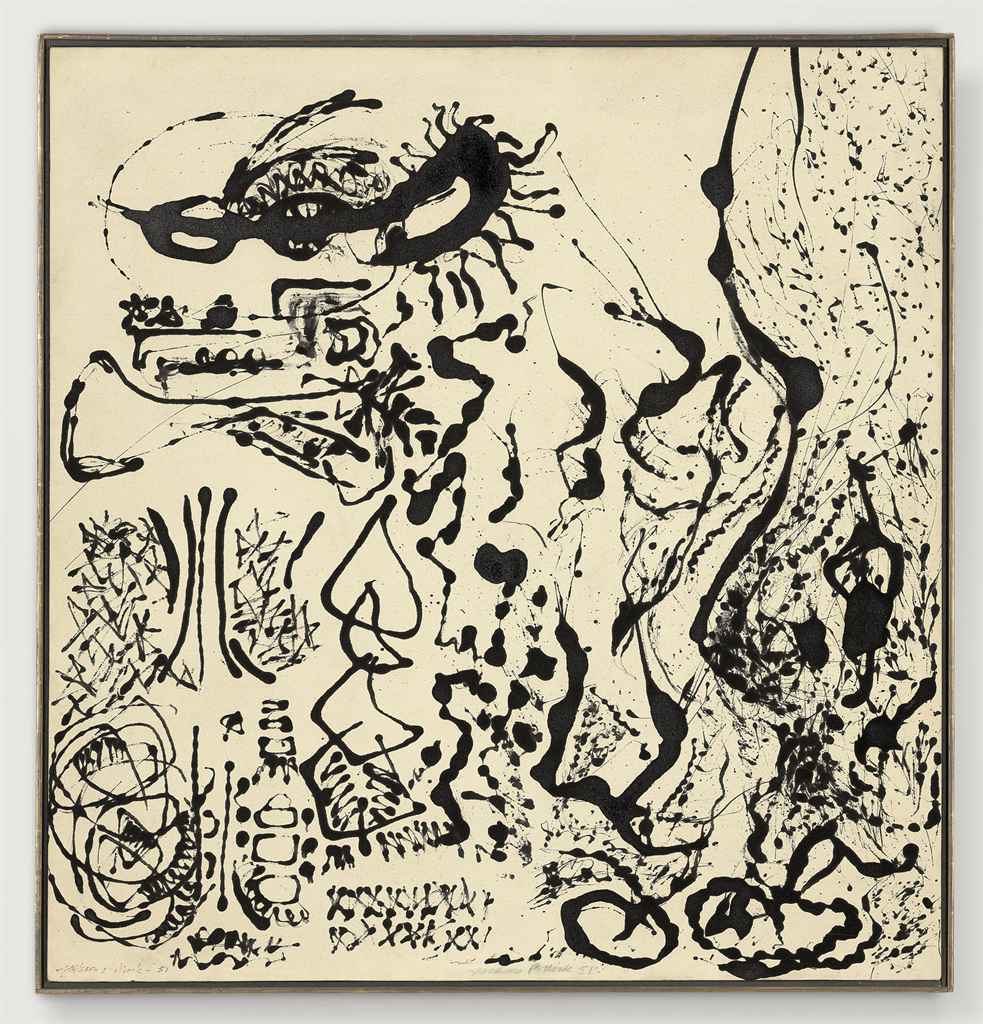
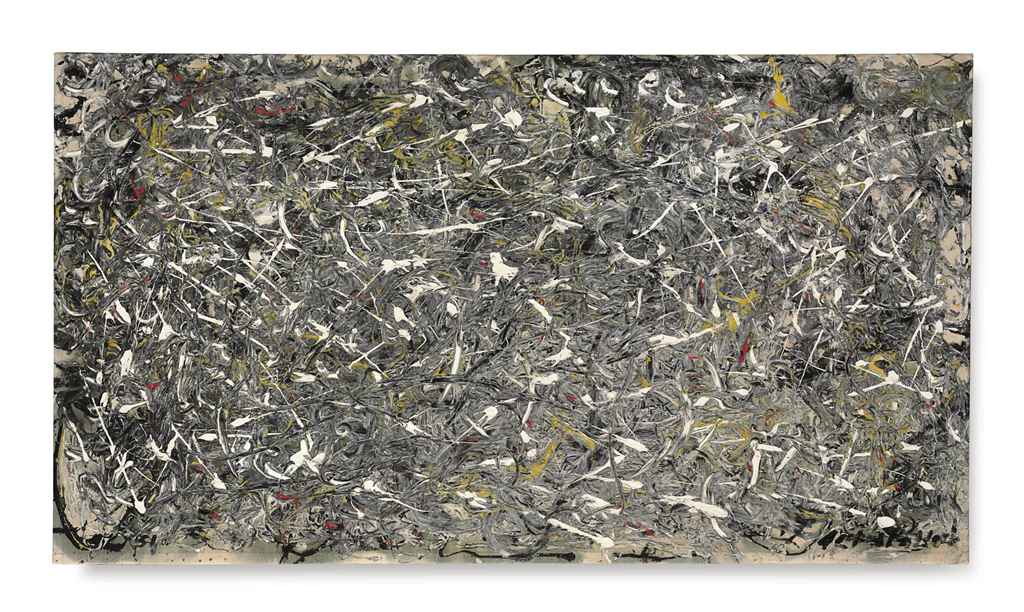



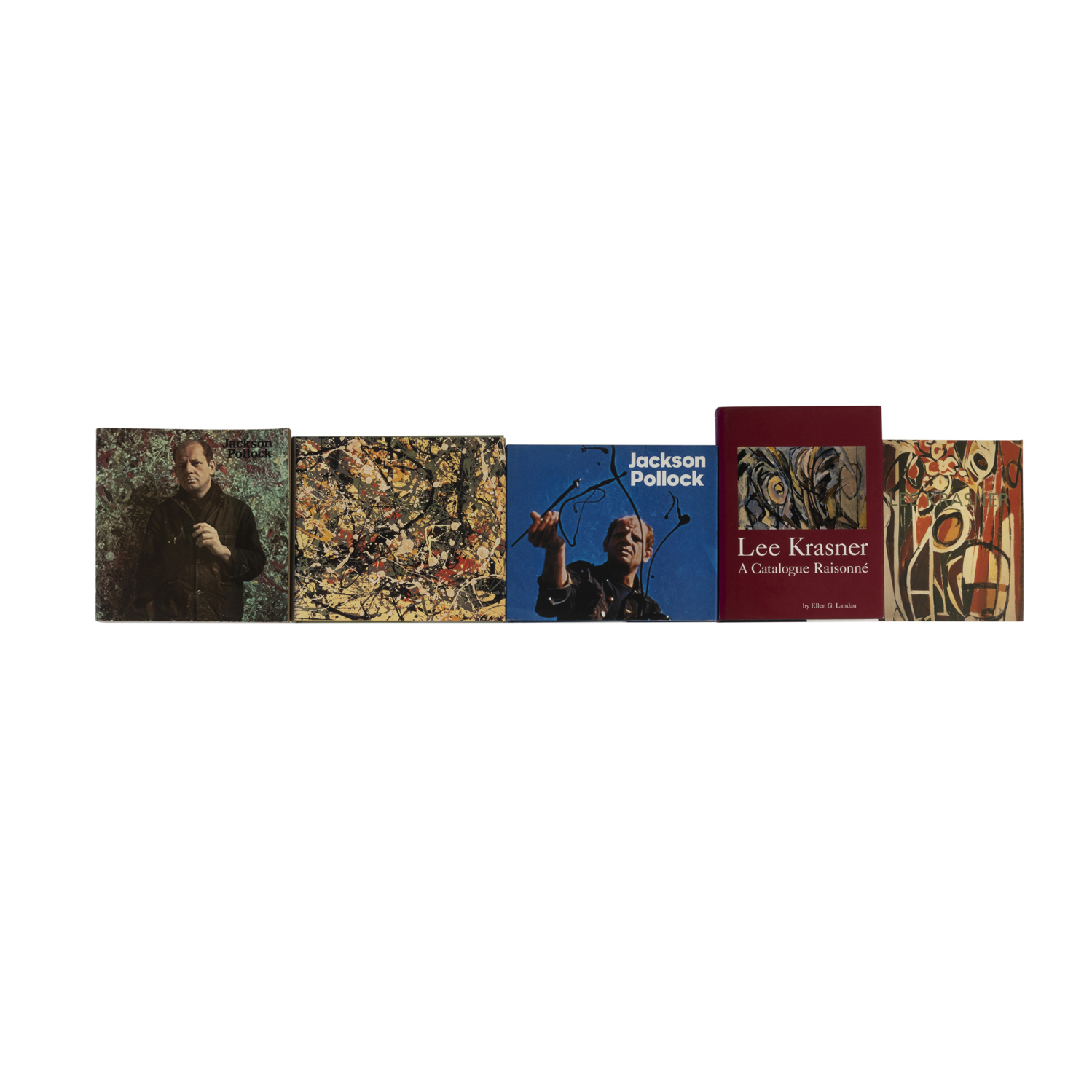
.jpg)
Try LotSearch and its premium features for 7 days - without any costs!
Be notified automatically about new items in upcoming auctions.
Create an alert